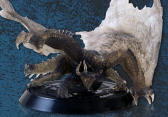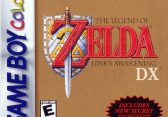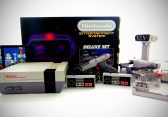Nintendo sure dropped a bombshell on us recently. After several years of dismissing the mobile games market, despite somewhat ushering in that demographic themselves a few years earlier through their Blue Ocean strategy and Touch! Generations brand, it was announced that mobile developer DeNA will be creating mobile games with Nintendo’s intellectual property. In the same breath even, Nintendo then further announced that a new online membership service would be up and running later this year. Just to top it off, they concluded by revealing the code name of their next dedicated piece of gaming hardware – the NX.
Nintendo and DeNA entered into what is known in legalese as a “business and capital alliance”. What seemed by many as an about-face on Nintendo’s part has apparently been in the works since at least 2010. Nintendo has since clarified their previous qualms as not wanting to spread themselves too thin. “Instead of one company having to do everything, this partnership will enable us to not assign an excessive number of development staff to areas where weaknesses exist, and as a result will help us avoid disturbances to our software development for dedicated video game systems” explained Satoru Iwata, the current President and CEO of Nintendo.
This seems understandable and realistic given Nintendo’s development challenges earlier on in the Wii U’s lifecycle due to a lack of human resources. In their recent push to rejuvenate the Wii U, it almost feels at times as if they have neglected the 3DS as a result. Given that we have seen an increase in activity from their software development subsidiaries and partners, I think allocating the resources necessary to support development within a burgeoning and highly competitive market on top of supporting their existing platforms would be unlikely.
Now, the end-goal here for Nintendo seems to be to complement their existing video game business and extend their reach into the vast market of new mobile-centric customers. In doing so, they may bridge that new, broader audience; to be more aware of the Nintendo brand, franchises, quality, and characters and drive them to their core dedicated gaming business. Releasing a series of franchise-centric mobile-friendly mini-games like the attractions from Nintendo Land, for example, would probably be a good starting point in achieving that goal – smaller, accessible software that not only acts as a way to promote their IP, but provides an additional revenue stream as well.

Nintendo Co. President Satoru Iwata, right, and DeNA Co. CEO Isao Moriyasu, shake hands during a joint news conference in Tokyo
In this way, mobile would serve as the long-fabled “third pillar”, if you will, in Nintendo’s gaming ecosystem (and unusual architectural metaphor). Sound familiar? When Nintendo first unveiled the original DS platform, they dubbed it their “third pillar” – to complement their console line-up and the handheld Game Boy family. A method of market expansion. Perhaps they were just covering their bases; in the event of another Virtual Boy-like misstep, they could fall back on their Game Boy line unscathed. In actuality, the DS family ultimately superseded the Game Boy.
Should we be worried that we will lose a possible 3DS’s successor to the mobile domain, just as the GBA fell to the DS? We are certainly seeing a lot of the same language now coming out of Nintendo as they had back when the DS was first announced. The DS was stressed to sit alongside the GameCube and the Game Boy Advance and not succeed them. Similarly, DeNA’s mobile efforts are supposed to complement the Wii U, the 3DS, and the upcoming NX – seemingly name-dropped to demonstrate their commitment to hardware despite the mobile effort. In addition, the DS launched as an experiment in novel gameplay mechanics and as groundwork for expanding the gaming market to a wider audience. …again, just like Nintendo has expressed for their mobile experience.
On mobile, Nintendo has stated that they will develop completely new software that matches the play style and control mechanisms of smart devices. Think of the early days of the DS with its touch screen mechanics and the kind of games we saw developed or published by Nintendo: Jam with the Band, Pokémon Dash, Polarium, WarioWare: Touched!, Another Code, Kirby: Canvas Curse, Meteos, Yoshi Touch & Go, Electroplankton, Nintendogs, Brain Age and Big Brain Academy, Elite Beat Agents, Pokémon Trozei!, Cooking Guide, English Training, Magnetica, and Touch Panic. All seem well posed to be revisited by Nintendo on the mobile platform. Why, other DS classic games like Ace Attorney, Ghost Trick, and The World Ends With You have already made the jump to mobile.

Developed with Nintendo’s Web Framework, Tipping Stars could be an early look at what mobile games may look like
Not to mention Nintendo’s earlier tilt-sensing experiments: Kirby Tilt ‘n’ Tumble and WarioWare: Twisted!. Or Nintendo’s smaller releases like bitGenerations / Art Style through DSiWare. Or their recent experiments with a free-to-play model: Steel Diver, Rusty’s Real Deal Baseball, Pokémon Shuffle (itself, a follow-up to the previously mentioned Trozei!), and Pokémon Rumble World. Or how about even Nintendo Software Planning & Development’s co-productions with Syn Sophia like Style Savvy?
As you can see, Nintendo has been making what we would likely consider mobile games for a very long time now… but for the wrong platform. Many of these games could be better suited to the mobile platform – finding a better fit and a larger audience.
My thinking is that with mobile, we will likely see these kinds of games leave the DS family of platforms. In addition, several of these may fare better with a multitouch capacitive screen than they do currently with Nintendo’s resistive touchscreens. Outside of the aforementioned titles, Nintendo’s functional use of a second screen (be it DS, 3DS, or Wii U) has largely been relegated as a map or inventory screen. Which is not to say it hasn’t been useful or beneficial, just not game-changing (literally) despite the amazing success.
I feel that this would “free” Nintendo up in a way. Enable them to reprioritize, refocus, and off-load some of their blue ocean responsibilities. This deal may play a part in Nintendo’s revitalization in the coming years following the floundering of the Wii U. In the upcoming follow-up to this article, I will explore how the DeNA deal may relate to the NX and Nintendo’s future plans – for hardware, software, and their own longevity.





























